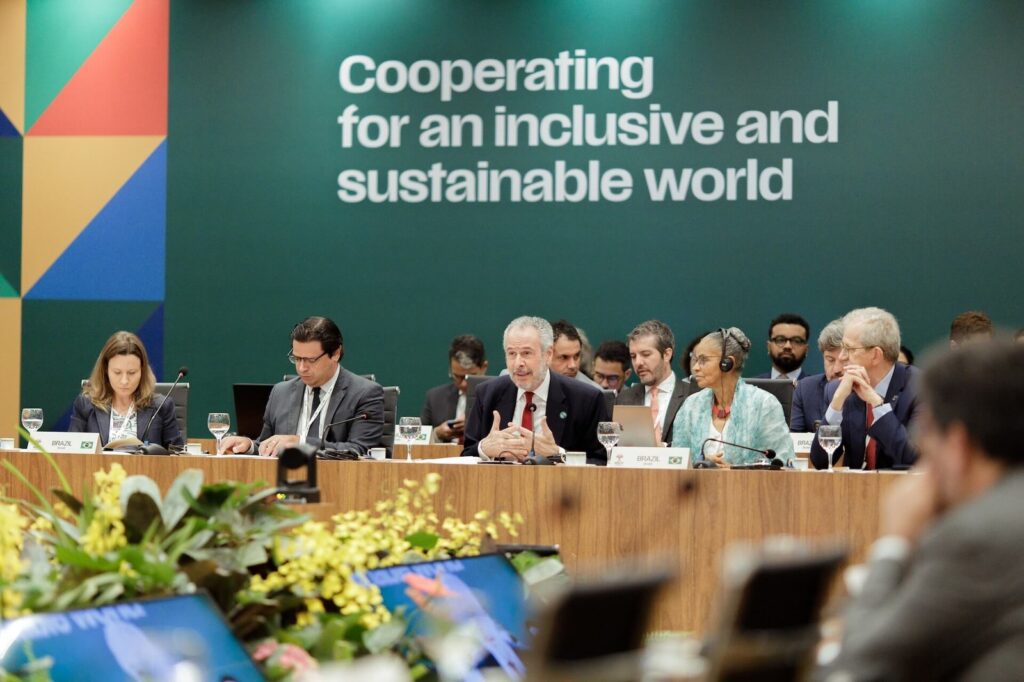A Pacific Research Institute (PRI) analysis on California and New York’s “green” energy policies shows that these policies are reducing the standard of living through increased energy prices.
Legislating Energy Poverty, written by PRI senior fellow Wayne Winegarden, finds green policies, such as cap-and-trade schemes, renewable energy mandates, renewable fuel standards, net metering programs, and restrictions on oil and natural gas production (such as New York’s ban on hydraulic fracturing) do more harm than good.
Winegarden explains how these programs are partly responsible for California having the highest average electricity prices in the continental United States, with New York not far behind at sixth-highest. California also has the nation’s second-highest gas prices and highest poverty rate, while New York has the 14th- and seventh-highest, respectively. Additionally, Winegarden notes these energy policies have barely helped those two states reduce carbon dioxide emissions. From 2007 to 2015, California ranked 33rd in per capita Carbon dioxide emission reductions, while New York ranked 27th.
“The CA-NY approach to global climate change policies imposes large economic costs on both states,” Winegarden wrote. “For families and households, the higher electricity and fuel costs increase their cost of living, and makes California and New York even less affordable places to live. The costs are particularly burdensome on lower-income families who can least afford these additional expenses. For businesses, the policies increase the costs of operating in these states and place additional strains on business profitability. The additional costs further encourage the economically damaging exodus of people and businesses away from both California and New York as well.”
Among green policies, renewable energy mandates have been particularly counterproductive. These mandates—often referred to as “renewable portfolio standards”—force expensive, heavily subsidized, and politically favored electricity sources such as wind and solar on ratepayers and taxpayers while providing few, if any, net environmental benefits.
A study by the liberal Brookings Institution found replacing conventional power with wind power raises electricity prices 50 percent, and replacing conventional power with solar power triples electricity costs.
Unsurprisingly, in states with renewable energy mandates, energy rates are rising twice as fast as the national average and states with renewable mandates had electricity prices 26 percent higher than those without one. According to U.S. Energy Information Administration, the 29 states with renewable energy mandates (plus the District of Columbia) had average retail electricity prices of 11.93 cents per kilowatt hour (cents/kWh), while the 21 states without renewable mandates had average retail electricity prices of just 9.38 cents/kWh.
In just 12 states, the total net cost of the renewable mandates was $5.76 billion in 2016 and will rise to $8.80 billion in 2030, a 2016 study revealed.
“The burdens that Californians and New Yorkers must bear are even more troubling because the emission trends in other states demonstrate that the CA-NY approach is not necessary in order to meaningfully reduce overall GHG emissions,” Winegarden concludes. “Total U.S. greenhouse gas emissions peaked in 2007 and have fallen over 14 percent since. In light of these trends, the CA-NY strategy should not be evaluated as if it is the only way to proceed. It must be evaluated against the strategies other states are implementing. Toward this end, embracing the fracking revolution and increasing the use of natural gas has been able to achieve what California and New York have not – these states have been able to lower GHG emissions while also promoting strong economic growth.”
The higher energy costs guaranteed by a switch from fossil fuels to higher-cost “renewable” electricity sources, such as wind or solar, lead to slower economic growth. Affordable energy is the key to productivity growth and the production of virtually all goods and services. To ensure that fewer households experience excessively-rising energy costs such as in California and New York, elected officials and agency regulators should repeal all subsidies, taxes, regulations, mandates, moratoria, and bans aimed at reducing the use of affordable fossil fuels.
The following documents provide more information about expensive green energy policies and fossil fuels.
Legislating Energy Poverty: A Case Study of How California’s and New York’s Climate Change Policies Are Increasing Energy Costs and Hurting the Economy
https://www.pacificresearch.org/wp-content/uploads/2018/12/LegislatingEnergy_F_Web.pdf
This analysis from Wayne Winegarden of the Pacific Research Institute shows the big government approach to fighting climate change taken by California and New York hits working class and minority communities the hardest. The paper reviews the impact of global warming policies adopted in California and New York, such as unrealistic renewable energy goals, strict low carbon fuel standards, and costly subsidies for buying higher-priced electric cars and installing solar panels. The report finds that, collectively, these expensive and burdensome policies are dramatically increasing the energy burdens of their respective state residents.
Less Carbon, Higher Prices: How California’s Climate Policies Affect Lower-Income Residents
https://heartland.org/publications-resources/publications/less-carbon-higher-prices-how-californias-climate-policies-affect-lower-income-residents
This study from Jonathan Lesser of the Manhattan Institute argues California’s clean power regulations, including the state’s renewable power mandate, is a regressive tax that harms impoverished Californians more than any other group.
The U.S. Leads the World in Clean Air: The Case for Environmental Optimism
https://files.texaspolicy.com/uploads/2018/11/27165514/2018-11-RR-US-Leads-the-World-in-Clean-Air-ACEE-White.pdf
This paper from the Texas Public Policy Foundation examines how the United States achieved robust economic growth while dramatically reducing emissions of air pollutants. The paper states that these achievements should be celebrated as a public policy success story, but instead the prevailing narrative among political and environmental leaders is one of environmental decline that can only be reversed with a more stringent regulatory approach. Instead, the paper urges for the data to be considered and applied to the narrative.
The Social Benefits of Fossil Fuels
https://heartland.org/publications-resources/publications/the-social-benefits-of-fossil-fuels
This Heartland Policy Brief by Joseph Bast and Peter Ferrara documents the many benefits from the historic and still ongoing use of fossil fuels. Fossil fuels are lifting billions of people out of poverty, reducing all the negative effects of poverty on human health, and vastly improving human well-being and safety by powering labor-saving and life-protecting technologies, such as air conditioning, modern medicine, and cars and trucks. They are dramatically increasing the quantity of food humans produce and improving the reliability of the food supply, directly benefiting human health. Further, fossil fuel emissions are possibly contributing to a “Greening of the Earth,” benefiting all the plants and wildlife on the planet.
Climate Change Reconsidered II: Fossil Fuels – Summary for Policymakers
https://heartland.org/publications-resources/publications/climate-change-reconsidered-ii-fossil-fuels—summary-for-policymakers
In this fifth volume of the Climate Change Reconsidered series, 117 scientists, economists, and other experts assess the costs and benefits of the use of fossil fuels by reviewing scientific and economic literature on organic chemistry, climate science, public health, economic history, human security, and theoretical studies based on integrated assessment models (IAMs) and cost-benefit analysis (CBA).
Evaluating the Costs and Benefits of Renewable Portfolio Standards
https://heartland.org/publications-resources/publications/evaluating-the-costs-and-benefits-of-renewable-portfolio-standards?source=policybot
This paper by Timothy J. Considine, a distinguished professor of energy economics at the School of Energy Resources and the Department of Economics and Finance at the University of Wyoming, examines the renewable portfolio standards (RPS) of 12 different states and concludes while RPS investments stimulate economic activity, the negative economic impacts associated with higher electricity prices offset the claimed economic advantages of these RPS investments.
Debunking Four Persistent Myths about Hydraulic Fracturing
https://heartland.org/publications-resources/publications/debunking-four-persistent-myths-about-hydraulic-fracturing
This Heartland Institute Policy Brief by Policy Analyst Timothy Benson and former Heartland communications intern Linnea Lueken outlines the basic elements of the fracking process and then refutes the four most widespread fracking myths, providing lawmakers and the public with the research and data they need to make informed decisions about hydraulic fracturing.
The Status of Renewable Electricity Mandates in the States
https://heartland.org/publications-resources/publications/the-status-of-renewable-electricity-mandates-in-the-states?source=policybot
The Institute for Energy Research finds states with renewable electricity mandates have on average 40 percent higher electricity rates than those without such mandates.
What Happens to an Economy When Forced to Use Renewable Energy?
https://heartland.org/publications-resources/publications/issues-2016-what-happens-to-an-economy-when-forced-to-use-renewable-energy?source=policybot
The Manhattan Institute conducted an economic analysis of the effects renewable portfolio standards (RPS) had on the average price of electricity in states with mandates compared to those without mandates. The study found residential and commercial electricity rates were significantly higher in states with RPS mandates than in states without them.
Nothing in this Research & Commentary is intended to influence the passage of legislation, and it does not necessarily represent the views of The Heartland Institute. For further information on this subject, visit Environment & Climate News, The Heartland Institute’s website, and PolicyBot, Heartland’s free online research database.
The Heartland Institute can send an expert to your state to testify or brief your caucus; host an event in your state; or send you further information on a topic. Please don’t hesitate to contact us if we can be of assistance! If you have any questions or comments, contact John Nothdurft, Heartland’s director of government relations, at [email protected] or 312/377-4000.




